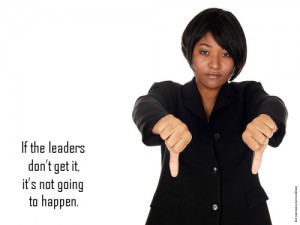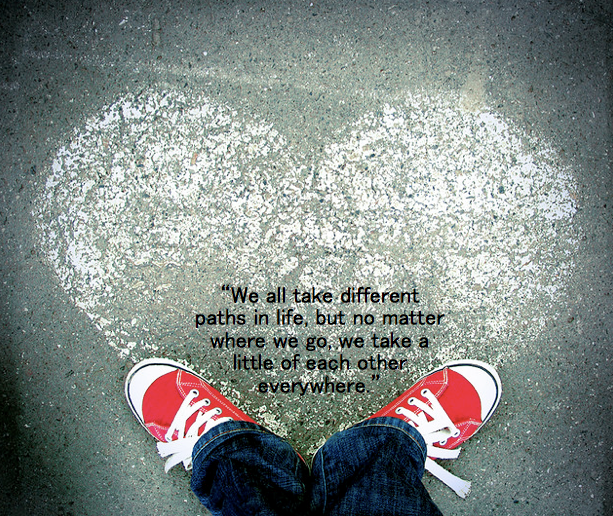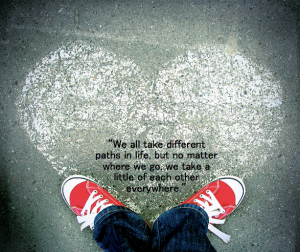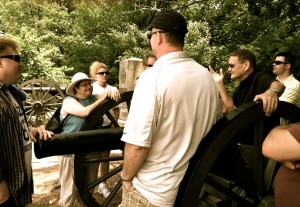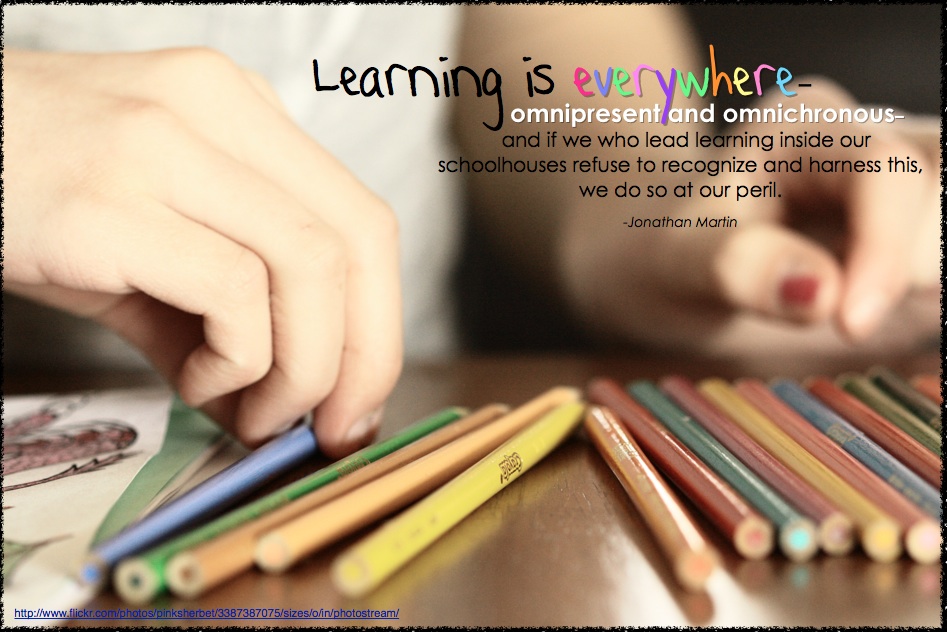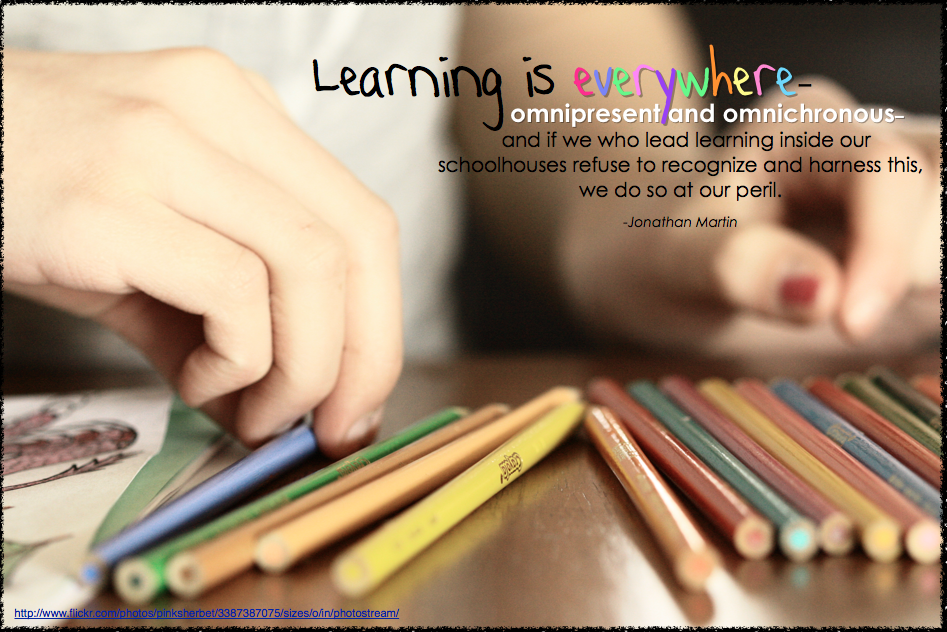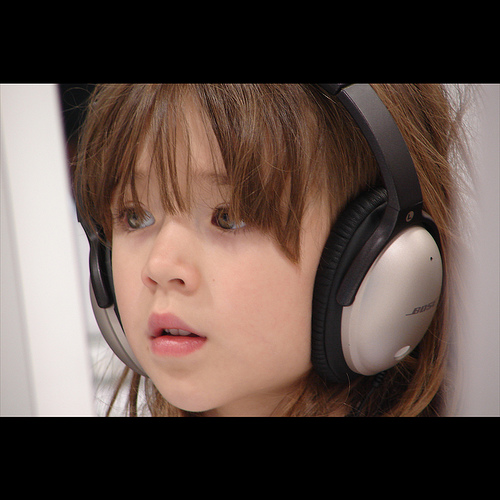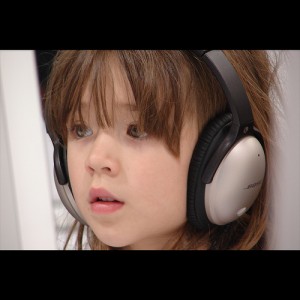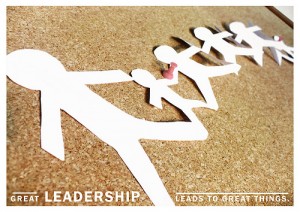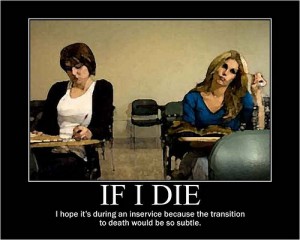
As a classroom teacher I engaged in several years of “professional development” before transitioning to a role of technology specialist, my first opportunity to design and facilitate learning sessions for my colleagues. Now as a building administrator, I often think back to the PD I experienced as a teacher.
There are very few instances I can recall with clarity. I can’t tell you most of the the topics discussed. I fail to recall activities we completed. What this indicates, to me, is that I was not a learner in those instances. I do have a rather clear picture in my memory of the workshops offered by Apple trainers when we were learning to use our new MacBooks. Perhaps those days are memorable because I’m a Mac-junkie, but more likely, it’s because I was an active participant in my learning on these occasions. We completed projects. We collaborated in teams. We were given autonomy and owned the day. We learned.
Consider the last time you experienced professional development offered by your school or district. Were you engaged in learning? How do you know? How did your learning impact your practice and influence student learning outcomes?
Learning Forward, formerly known as the National Staff Development Council, has undergone an important shift in focus and message: from one of development to one of learning. Stephanie Hirsch, Learning Forward’s Executive Director, reported in Education Week on the council’s release of the newly revised Standards for Professional Learning.
These standards call for a new form of educator learning. The decision to call these Standards for Professional Learning rather than Standards for Professional Development signals the importance of educators taking an active role in their continuous development and places emphasis on their learning. The professional learning that occurs when these standards are fully implemented enrolls educators as active partners in determining the content of their learning, how their learning occurs, and how they evaluate its effectiveness. The standards give educators the information they need to take leadership roles as advocates for and facilitators of effective professional learning and the conditions required for its success. Widespread attention to the standards increases equity of access to a high-quality education for every student, not just for those lucky enough to attend schools in more advantaged communities.
The standards are of great interest to me as an administrator who is charged with planning and implementing professional learning opportunities for my teachers and staff. In particular, I was curious to see how the standards addressed the need for educators to connect and collaborate with other educators in a variety of ways to enhance learning opportunities. I wanted to know:
• How do these standards guide educators in “taking an active role in their continuous development”?
• Is there a balanced approach that includes and respects teachers’ desires to individualize learning through professional learning network connections?
• Is there ample opportunity for teachers to own their learning, supported through the typical professional development structures of a school system?
Hirsch’s quote in bold is quite meaningful. I appreciate that the standards focus on teachers as learners. Teachers are not to be treated as vehicles through which schools deliver programs and policies. This, in my opinion, has been the focus of traditional professional development frameworks for way too long.
Teachers, like students, are first and foremost individuals who have passions, interests, and an inherent desire to learn. The goal for administrators should then become how to foster the learning spirit in each and every one of our teachers through a system of learning opportunities that cater to their individual needs. This, in turn, will ignite a true excitement for learning in our teachers, which will transfer into their practice. The result? Students who spend their days with teachers who exhibit a true desire to grow professionally and who model that learning matters.
The revised standards emphasize collaboration & community
Educators can access the Standards for Professional Learning via Learning Forward’s website. They are organized into 7 domains:
Learning Communities: Professional learning that increases educator effectiveness and results for all students occurs within learning communities committed to continuous improvement, collective responsibility, and goal alignment.
Leadership: Professional learning that increases educator effectiveness and results for all students requires skillful leaders who develop capacity, advocate, and create support systems for professional learning.
Resources: Professional learning that increases educator effectiveness and results for all students requires prioritizing, monitoring, and coordinating resources for educator learning.
Data: Professional learning that increases educator effectiveness and results for all students uses a variety of sources and types of student, educator, and system data to plan, assess, and evaluate professional learning.
Learning Designs: Professional learning that increases educator effectiveness and results for all students integrates theories, research, and models of human learning to achieve its intended outcomes.
Implementation: Professional learning that increases educator effectiveness and results for all students applies research on change and sustains support for implementation of professional learning for long term change.
Outcomes: Professional learning that increases educator effectiveness and results for all students aligns its outcomes with educator performance and student curriculum standards.
Am I thrilled to see that Learning Communities is a component of the standards? Absolutely. As I addressed in my recent Reform Symposium presentation, Teachers as Learners, adult learning is enhanced through collaborative opportunities with colleagues that focus on shared passions, visions, and goals. Learning Forward describes learning communities as necessary to ensure continuous results for students, the development of collective responsibility, and the achievement of goals.
Within this domain, it is encouraging to see the standards highlight technology use as an integral way to form and foster a virtual learning community:
While some professional learning occurs individually, particularly to address individual development goals, the more one educator’s learning is shared and supported by others, the more quickly the culture of continuous improvement, collective responsibility, and high expectations for students and educators grows. Collective responsibility and participation foster peer-to-peer support for learning and maintain a consistent focus on shared goals within and across communities.
Technology facilitates and expands community interaction, learning, resource archiving and sharing, and knowledge construction and sharing. Some educators may meet with peers virtually in local or global communities to focus on individual, team, school, or school system improvement goals. Often supported through technology, cross-community communication within schools, across schools, and among school systems reinforces shared goals, promotes knowledge construction and sharing, strengthens coherence, taps educators’ expertise, and increases access to and use of resources.
This component is often neglected in typical “professional development” plans offered by school systems. How can we work to include more variety in the types of learning communities we’re forming and supporting? This coming year several of my teachers are working to implement The Daily 5 framework into their literacy blocks. I purchased books for them to read, and they will be meeting in study groups and observing classrooms throughout the year to support one another.
But some of my teachers took their learning a step farther. This week I was so pleased to see some of them engage in the #daily5 hashtag chat on Twitter. I had no idea they knew about the chat (I didn’t!), yet they sought out support and felt the desire to collaborate with other teachers who have experienced implementation of this framework. I watched as they shared ideas and knew they were indeed learning from this experience. This wasn’t dictated by our PD plan. It was something they had a passion for learning more about, and they used their PLN to facilitate their learning in this area.
I am also pleased that Leadership is a component of the Learning Forward standards. The Standards state that Leaders of professional learning are found at the classroom, school, and system levels. For far too long we have neglected to recognize our own teachers as experts in the field. Our teachers need to be given the opportunity to lead learning for their colleagues. It is essential to allow teachers to run district and school workshops and design and implement their own PD. How is this supported?
To engage in constructive conversations about the alignment of student and educator performance, leaders cultivate a culture based on the norms of high expectations, shared responsibility, mutual respect, and relational trust.
What do we need professional learning to be?
We need teachers to
- be active participants in the learning process, one supported through a culture of trust
- determine what content is important to learn
- decide how they will best learn and implement this content
- collaborate with others in communities of learning
- assume leadership roles in the learning process
- evaluate how effective their learning has been, including systemic reflection
To become more familiar with the Standards for Professional Learning and how they can support the frameworks you develop for teacher learning in your school, I recommend reading the research-base supporting each component, as well as checking out the FAQs and More FAQs shared by Learning Forward.
If you are a teacher, how will you take ownership for your learning this year? How will you communicate your needs to your administrators? If you are an administrator, how will you design and implement opportunities for your teachers to learn this year?
Written for the Powerful Learning Practice Voices blog. Originally posted on August 18, 2011.


